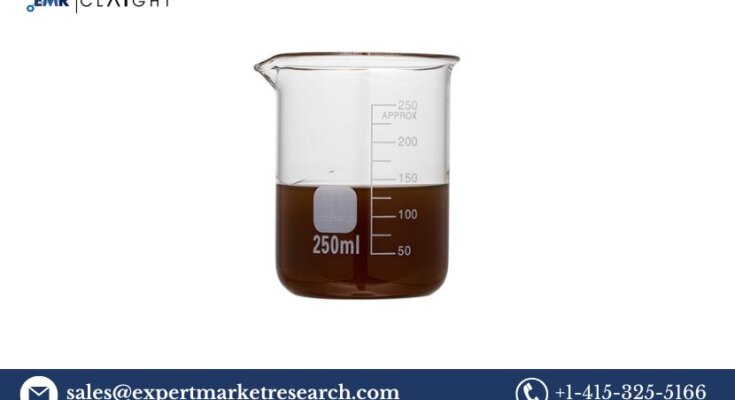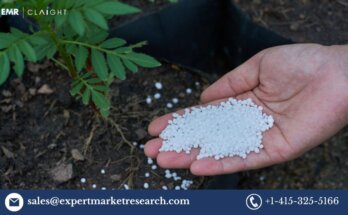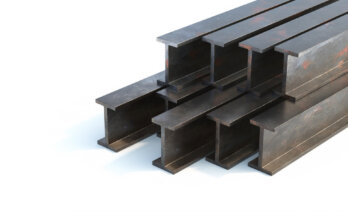The Linear Alkylbenzene Sulfonic Acid (LABSA) Market Outlook points to a rapidly growing demand for this essential chemical compound, which plays a pivotal role in the global surfactant industry. LABSA is primarily used in the production of cleaning agents such as detergents, dishwashing liquids, and industrial cleaners, as well as in personal care products. With a rising focus on hygiene, sustainability, and high-performance cleaning solutions, LABSA continues to see increasing consumption across various sectors. In 2023, global LABSA production capacity was approximately 3,600 KT, and it is forecast to reach 4,000 KT by 2032. The Asia Pacific region holds the largest share of LABSA production, driven by the rapid growth of its chemical and manufacturing industries. As the capacity utilization of LABSA plants reached 73.0% in 2023, there is substantial room for growth and improvement, positioning LABSA as a critical player in the market’s future development.
LABSA Market Demand Drivers
Consumer Goods and Household Cleaning Products
The primary driver for LABSA’s demand is the household cleaning product market, where it serves as a core ingredient in detergents and surface cleaners. Over the past few years, there has been a significant increase in the demand for cleaning products, driven by heightened consumer awareness of hygiene, particularly post-pandemic. Consumers now expect products that deliver superior cleaning performance, disinfecting properties, and eco-friendliness. LABSA, with its excellent surfactant properties, is a favored choice for detergent manufacturers aiming to meet these evolving demands.
Laundry detergents and dishwashing liquids make up the largest portion of LABSA consumption. As disposable incomes grow, particularly in emerging economies across Asia, Africa, and Latin America, there is an uptick in demand for both premium and mass-market cleaning products. In these regions, urbanization, coupled with changing consumer lifestyles, is contributing significantly to increased consumption.
Moreover, with the growing shift towards eco-friendly products, LABSA has gained favor due to its biodegradable nature. Manufacturers are increasingly formulating products that are not only effective but also environmentally responsible, which makes LABSA an ideal choice for sustainable cleaning solutions.
Get a Free Sample Report with Table of Contents@
Industrial Applications
Beyond consumer goods, LABSA has a robust presence in industrial applications, particularly in heavy-duty cleaning products for sectors such as automotive, textiles, metal, and oil & gas industries. LABSA-based surfactants are highly effective in removing oils, greases, and tough stains, making them an essential component in manufacturing and maintenance cleaning products.
For instance, in the automotive sector, LABSA is used in formulations for cleaning vehicle parts, machinery, and manufacturing equipment. Similarly, the textile industry uses LABSA in detergents that clean and degrease fabrics, particularly in large-scale operations. The demand for industrial-grade cleaning solutions is expected to grow, especially as industries across the globe expand their production capacities.
Personal Care Products
LABSA is also increasingly used in the personal care sector, primarily in the formulation of shampoos, soaps, body washes, and other toiletries. The compound’s ability to generate foam and enhance cleaning power makes it an attractive ingredient for personal care products.
With growing consumer preference for more sustainable and natural personal care products, LABSA has found a niche in eco-friendly formulations. Manufacturers are keen on developing products that cater to the rising consumer demand for biodegradable and sustainable ingredients, making LABSA a key player in the personal care and cosmetics markets.
LABSA Market Supply Drivers
Raw Material Availability and Price Volatility
LABSA is derived from linear alkylbenzene (LAB), which in turn is produced from petrochemical feedstocks such as benzene and ethylene. The availability and price of these petrochemical raw materials directly impact the production costs of LABSA. Given the global fluctuations in oil and natural gas prices, manufacturers of LABSA face constant pressure to manage production costs while maintaining competitive pricing.
Additionally, geopolitical events and supply chain disruptions in major oil-producing regions, particularly the Middle East and Russia, have a direct impact on the cost and stability of raw material supply. For example, when oil prices rise due to geopolitical instability, the production cost of LABSA increases, potentially affecting its price in the marketplace.
Technological Advancements in Production
The production of LABSA has undergone numerous technological improvements to increase efficiency and reduce costs. Modern production processes focus on maximizing yield while minimizing energy consumption and waste generation. Innovations in sulfonation technologies have also enhanced the quality of LABSA, leading to better foaming properties, enhanced biodegradability, and more stable formulations.
Green chemistry and environmentally friendly production methods are becoming increasingly popular within the LABSA industry. Manufacturers are adopting more sustainable production techniques to meet both regulatory requirements and consumer demand for eco-friendly products. These efforts are expected to lower production costs and improve the long-term sustainability of LABSA manufacturing.
Regional Production Capacity and Market Share
As of 2023, the global LABSA production capacity stands at 3,600 KT, with estimates predicting this to rise to 4,000 KT by 2032. The Asia Pacific region, in particular, continues to dominate the global LABSA market, accounting for the largest share of global production capacity. China and India are significant contributors to this supply, with their rapidly growing chemical manufacturing industries.
The region benefits from low-cost feedstocks, a well-established chemical manufacturing infrastructure, and high demand for both domestic consumption and export. Asia Pacific’s dominance in LABSA production is set to continue, with further expansion in capacity expected as regional demand for detergents and cleaning products continues to rise.
North America and Europe also play significant roles in the LABSA market, though they lag behind Asia in terms of production scale. These regions are, however, seeing an increase in the use of LABSA in industrial applications and specialty cleaning products, which will drive demand in the years to come.
Trends Shaping the LABSA Market
Sustainability and Green Product Development
Sustainability is one of the most significant trends shaping the LABSA market. Consumers are increasingly seeking environmentally friendly products, and manufacturers are responding by focusing on producing biodegradable, non-toxic, and sustainable cleaning solutions. LABSA, being biodegradable, fits well within this sustainability framework, helping manufacturers meet environmental regulations and consumer expectations.
In response to increasing demand for green chemistry solutions, many LABSA producers are incorporating more sustainable production practices. From reducing carbon emissions to utilizing renewable energy sources, these efforts are expected to drive both cost savings and competitive advantages for LABSA manufacturers.
Growing Demand for High-Efficiency Products
With increased focus on efficiency, the demand for concentrated and high-efficiency cleaning products is growing. LABSA’s excellent performance in low concentrations makes it a key ingredient in these formulations. The demand for products that require less packaging, less product per application, and still achieve superior results is expected to rise, particularly in consumer goods like laundry detergents and dishwashing liquids.
These high-efficiency formulations help reduce environmental impact, including transportation costs, energy consumption, and waste generation, which further align with the rising global focus on sustainability.
Increasing Regulatory Pressure
Governments around the world are placing increasing pressure on industries to meet stricter environmental standards. Regulations governing the use of petrochemicals and the environmental impact of production processes are expected to drive further innovation within the LABSA industry. Manufacturers will need to stay ahead of these regulations by investing in cleaner, more sustainable production technologies that minimize harmful emissions and waste.
LABSA Market Forecast and Future Outlook
The LABSA market is expected to continue growing through 2032, driven by the expanding global demand for cleaning and personal care products, coupled with the increased focus on sustainability. As of 2023, the global LABSA production capacity is 3,600 KT, and it is projected to grow to 4,000 KT by 2032. This growth will primarily be driven by strong demand from the Asia Pacific region, as well as rising industrial and consumer demand for high-performance surfactants in detergents and cleaning formulations.
Technological advancements, such as the adoption of more sustainable production methods and green chemistry innovations, are expected to further shape the market. With sustainability at the forefront of consumer preferences and regulatory pressure, manufacturers who invest in environmentally friendly production techniques will likely hold a competitive edge in the marketplace.
Media Contact
Company Name: Claight Corporation
Contact Person: Lewis Fernandas, Corporate Sales Specialist — U.S.A.
Email: sales@expertmarketresearch.com
Toll Free Number: +1–415–325–5166 | +44–702–402–5790
Address: 30 North Gould Street, Sheridan, WY 82801, USA
Website: www.expertmarketresearch.com
Aus Site: https://www.expertmarketresearch.com.au




